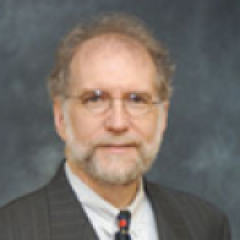Shanker Blog: New York City: The Mississippi Of The Twenty-First Century?
Last month saw the publication of a new report, New York State’s Extreme School Segregation, produced by UCLA’s highly regarded Civil Rights Project. It confirmed what New York educators have suspected for some time: our schools are now the most racially segregated schools in the United States. New York’s African-American and Latino students experience “the highest concentration in intensely-segregated public schools (less than 10% white enrollment), the lowest exposure to white students, and the most uneven distribution with white students across schools.”
Driving the statewide numbers were schools in New York City, particularly charter schools. Inside New York City, “the vast majority of the charter schools were intensely segregated,” the report concluded, significantly worse in this regard “than the record for public schools.”
New York State’s Extreme School Segregation provides a window into the intersection of race and class in the city’s schools. As a rule, the city’s racially integrated schools are middle class, in which middle-class white, Asian, African-American and Latino students all experience the educational benefits of racial diversity. By contrast, the city’s racially segregated public schools are generally segregated by both race and class: extreme school segregation involves high concentrations of African-American and Latino students living in poverty.
Interestingly, while New York City charter schools are more segregated by race than the district schools, they are less segregated by class; this pattern reflects a recruitment of students from inner city communities whose families possess more economic resources. Such recruitment also has the effect of intensifying the economic class segregation in the city’s high-poverty community schools.
New York City schools that are doubly segregated by race and class end up with extraordinary concentrations of social and economic need – with high numbers of students who are homeless, who suffer from untreated health conditions, who have special needs, and who are English language learners. In a very real way, these schools are actually more segregated than were southern schools during the Jim Crow era, when racially segregated African-American schools still contained the full spectrum of economic classes and educational need found in the community.
As a young adolescent growing up in New York City during the heyday of the civil rights movement, I sang along with Phil Ochs more than once when he refrained “Mississippi find yourself another country to be part of.” Mississippi was a symbol of everything that was wrong, deeply wrong with the Jim Crow South: a regime of racial oppression and economic exploitation enforced through brutal violence. As the 50th anniversary of Mississippi Freedom Summer approaches, we remember the three young civil rights workers – James Earl Chaney, Andrew Goodman, and Michael ‘Mickey’ Schwerner – who were kidnapped, tortured and murdered by racists from the Mississippi Ku Klux Klan. Two of those young men were Jewish New Yorkers, the third an African-American from Mississippi. These depraved acts were one of many such events in Mississippi, from the torture and murder of fourteen year old Emmett Till to the assassination of NAACP leader Medgar Evers.
In those days, New Yorkers from many walks of life went south to march, to teach, to help. But today, 50 years later, it is New York – and not Mississippi – which harbors the most racially segregated schools in the nation. Where are the editorials in the New York Times? Where are the statements by elected officials, by representatives of different religious faiths, by community leaders? Where is the outrage? We New Yorkers should be ashamed, deeply ashamed of this fact. I know I am.*
- Leo Casey
*****
* I write as someone who, until I took up my current position with the Albert Shanker Institute in September 2012, spent my entire life, excepting my years in college and graduate school, as a proud citizen of New York City. Twenty-seven of those years were spent teaching in New York City’s public schools.
This blog post has been shared by permission from the author.
Readers wishing to comment on the content are encouraged to do so via the link to the original post.
Find the original post here:
The views expressed by the blogger are not necessarily those of NEPC.
